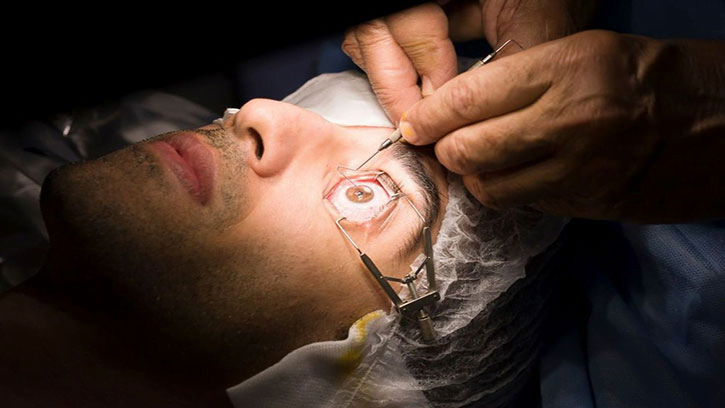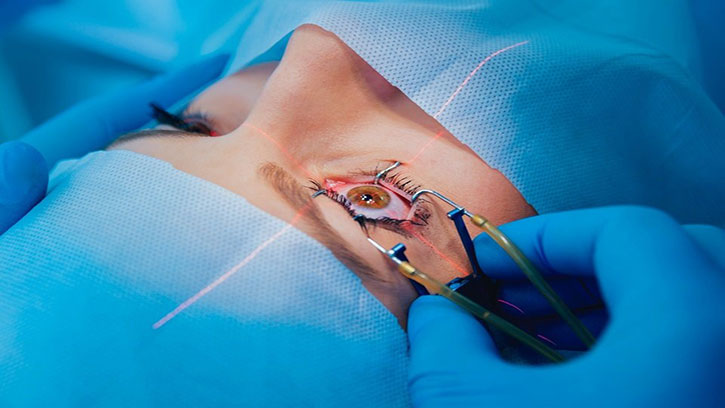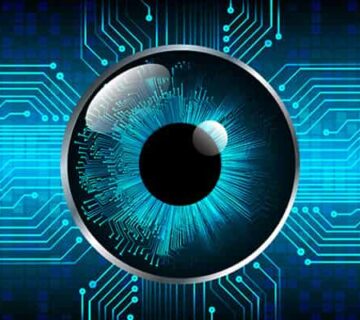Eye evisceration refers to a type of surgical procedure in which all or part of the eye is removed, depending on the severity of the injury. In some cases, the human eye may sustain severe damage due to trauma, accidents, or diseases such as eye cancer, leading to the loss of its natural structure.

When the eye no longer retains its natural form or functionality, evisceration surgery may become necessary. Eye evisceration negatively impacts aesthetic appearance, prompting patients to use artificial eyes (ocular prostheses) to compensate. This article provides comprehensive explanations regarding artificial eye use and eye evisceration procedures.
Types of Eye Evisceration Surgeries
There are generally two main types of eye evisceration surgeries, with a third complex option, selected based on the extent of ocular damage. Below are details about each procedure and their applications:
1. Partial Evisceration (Evisceration)
This less invasive procedure does not involve complete removal of the eye. During evisceration, only damaged parts—such as the cornea and internal contents—are removed. Structures like the eye muscles and the sclera (the white outer layer) are preserved.
Conditions for Evisceration:
- The eye must not be affected by malignant tumors.
- No severe infection or tissue abnormalities should be present.
Post-surgery, a scleral shell is used to maintain aesthetic appearance. Since the natural muscle attachments remain intact, scleral shells offer better movement and a more natural look compared to full ocular prostheses.

2. Complete Evisceration (Enucleation)
Enucleation is performed in cases of severe damage, such as trauma, advanced cancer, or infection. As the name implies, the entire eye is removed.
After enucleation, an ocular prosthesis is required. To enhance prosthesis movement, eye muscles are attached to an orbital implant.
3. Complete Evisceration with Eyelid Removal (Exenteration)
Exenteration is a complex surgery involving the removal of the entire eyeball, surrounding tissues, and sometimes eyelids and orbital bones.
Post-Operative Care
After eye evisceration, specific care and activity restrictions are essential. Patients typically do not require hospitalization and can return home the same day.
Key Guidelines:
- Pain Management: Over-the-counter pain relievers can address post-operative discomfort.
- Activity Restrictions: Avoid swimming, sports, heavy lifting, and strenuous activities for 2–4 weeks.
- Dressing Care: Regularly change eye dressings as advised by the physician.
- Complications: Watch for drooping eyelids, infection, bleeding, or ulcers. Prescribed eye drops may be needed.
Fitting and Placement of Artificial Eyes
After 6–8 weeks (once swelling subsides), patients can begin the process for an artificial eye. Licensed specialists take an impression of the eye socket to create a custom implant.

Movement of the Prosthesis:
By attaching eye muscles to the implant, up to 70% of natural eye movement can be restored. While not identical to a healthy eye, this often prevents others from noticing the prosthesis.
Cleaning and Polishing the Prosthesis
Cleaning: Use baby shampoo, contact lens solution, or diluted Betadine. Avoid alcohol-based products, as they damage the prosthesis.
Polishing: Visit a specialist annually to maintain clarity and comfort.
Cost and Production Time
Cost and production time vary based on the extent of damage and materials used. Multiple visits to an ocularist may be required for optimal results.
Mahan Artificial Eye Center
With a long-standing reputation, Mahan Artificial Eye Center offers a diverse range of ocular prostheses. For precise pricing and consultations, contact:
Phone: 00982166889076 / 00989128357509
Address: Refer to the “Contact Us” section on our website.
Patients are welcomed to visit our specialized clinic for personalized care and high-quality prosthetic solutions.




No comment